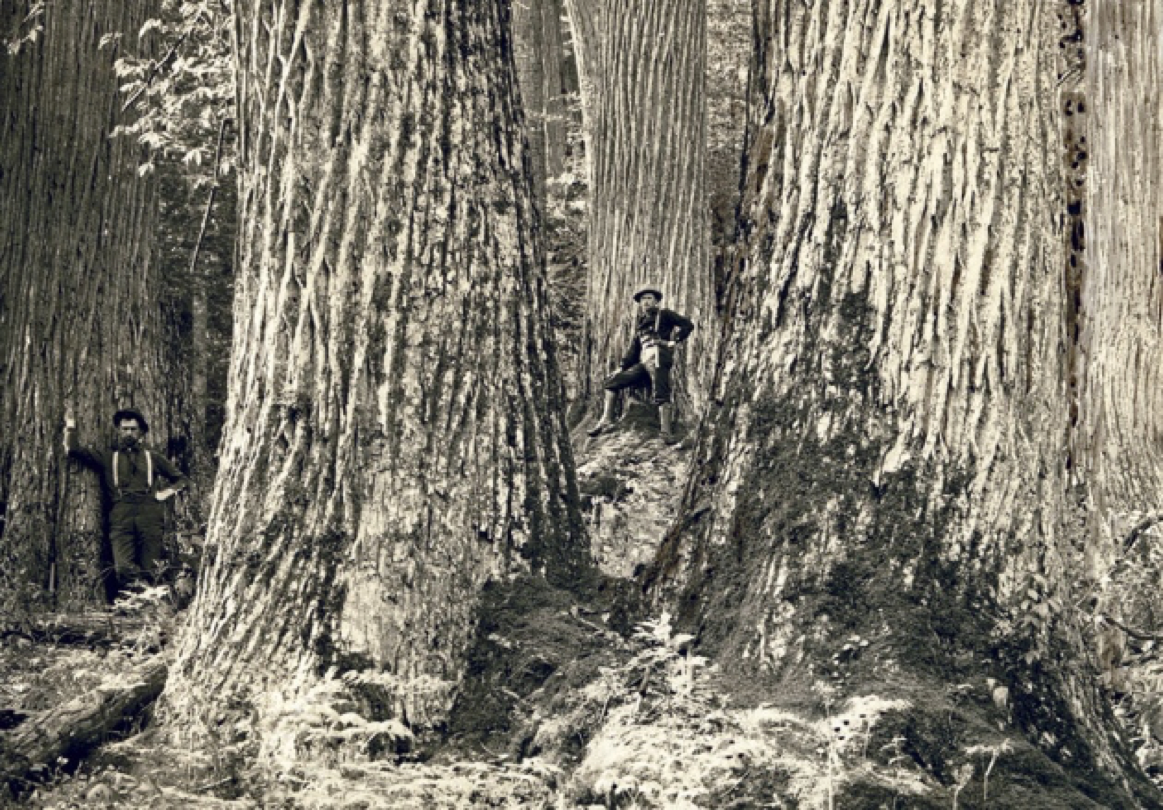A Call to Action
Most people imagine the southeastern United States at the time of European settlement as a dense, forested landscape with “trees so thick a squirrel could travel from the Atlantic Ocean to the Mississippi River without touching the ground.” In reality, however, the South was a diverse mosaic of forests and woodlands punctuated by scattered grasslands of many different types, with individual patches ranging from less than an acre to hundreds of thousands of acres. Clearly, such grasslands would have impeded the westward progress of our adventurous squirrel and such a journey would have required a very circuitous route.
A common misconception is that most of the southeastern U.S. was covered in massive virgin forests at the time of European settlement.
The South is one of North America’s great but “forgotten” grassland regions, which historically included open treeless prairies, rocky barrens and glades, pine and oak savannas, coastal prairies, wet grasslands (e.g. bogs and fens), and high-elevation mountaintop meadows called balds. Although some Southern grasslands resembled vast, treeless Midwestern tallgrass prairie, most were intrinsically smaller, more isolated, and embedded within a larger matrix of woodlands and forests.
We know surprisingly little about our historical grasslands, some of which were treeless and covered millions of acres, much like the Great Plains. This is because most were gone before the camera was invented; most were never painted; and many were never described by naturalists before they succumbed to conversion to agricultural fields or succeeded into thickets and forests. Stories of the once great grasslands died with our ancestors who failed to pass on accounts of their existence and unfortunately there is no one alive today who witnessed their grandeur. Quite literally, our Southern grasslands have been erased from our collective historical memory as a society. They have, in effect, been out of sight and out of mind for a century or more. How can you protect what you don't understand?
Sadly, the past 200 years have not been kind to Southern grasslands and the many different types have suffered staggering losses, more than 99% of their original extent for some types. Today our remaining grasslands represent “the last 1%” of what once were unbelievable Southern landscapes. They persist as barely recognizable fragments, clinging to existence, occupying fencerows, powerline corridors, roadsides, corners of old fields, and small clearings among forests. The people who can recognize our remnant grasslands are few and far between. They read the landscape much like a forensic detective reads clues at a crime scene in an attempt to reimagine what once was.
The loss of Southern grasslands has contributed to plummeting populations of many iconic species of animals (Bobwhite Quail, Monarch Butterflies, Greater Prairie Chicken) and plants. These losses are triggering unprecedented interest from the scientific and conservation communities who, really just in the past five years, have started to realize the true extent of Southern grasslands and their importance to the biodiversity of North America. This wake up call cannot come soon enough. In the past year, new data suggest once common birds such as Northern Bobwhite will see half of its current population disappear by 2030 and that remaining portion will decline by half again by 2038. We will likely begin seeing the extinction of grassland-dependent species by 2050 and this number will only increase toward 2100.
While there have been pockets of conservation momentum building, there has been no organized region-wide effort to address the imminent threats facing the Southern grasslands. We are launching the Southeastern Grasslands Institute (SGI) to take on that leadership role and to transform grassland conservation.


